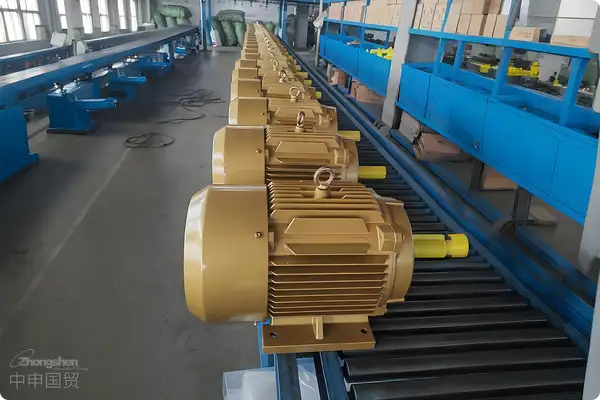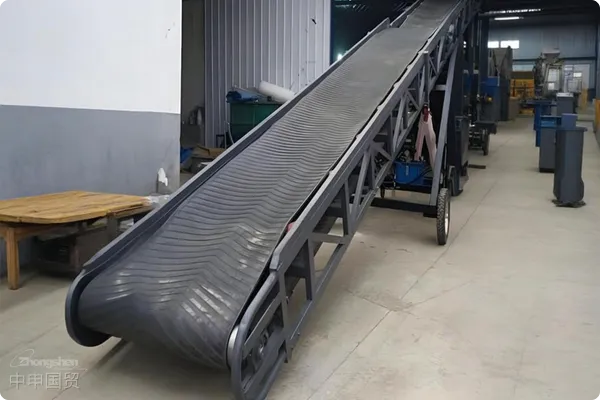- Shanghai Zhongshen International Trade Co., Ltd. - Two decades of trade agency expertise.
- Service Hotline: 139 1787 2118

With the deepening of Sino-Russian trade cooperation, machinery and equipment have become a key export category to Russia. However, complex customs clearance procedures and hidden costs often expose enterprises to the risk of cost overruns. This article systematically outlines the core components of Russian customs clearance fees from a practical business perspective and provides scientific estimation methods.
I. Main Components of Customs Clearance Fees for Machinery Equipment in Russia
Customs Duty
- Tariff Range: Machinery equipment typically carries tariff rates of 5%-15%, depending on the HS code and preferential policies under the Eurasian Economic Union (EAEU).
- Special Provisions: Certain industrial equipment may qualify for tariff exemptions. Verify if products meet the requirements of the [Technical Duty-Free List] in advance.equipment. For example, Indonesia has the SNI certification, Thailand has the TISI certification, and the Philippines has the BPS certification. It is necessary to confirm in advance the equipment voltage (such as 380V/50Hz in Thailand), the compatibility of the CE certification, and the proof of environmentally friendly materials.: Russias VAT rate is 20%, calculated based on the sum of [goods value + customs duty + other surcharges].
Value-Added Tax (VAT)
- Standard rateTax Refund Conditions
- : If the importer is a Russian VAT taxpayer, they may apply for subsequent tax deduction.: When engaging customs brokers, service fees apply (approximately $500-$2,000, varying by goods value and complexity).
Customs Brokerage Fee
- Agency feesExpedited Service
- : Additional rush processing fees may apply for fast-track clearance.Certification Costs
Document Processing Fee
- : Machinery equipment requires GOST-R certification, EAC conformity declarations, etc., with certification fees around $1,000-$5,000.Translation and Notarization
- : Translation and notarization fees for Russian contracts and invoices (approximately $200-$800).Customs Warehouse Fees
Storage and Demurrage Charges
- : Storage fees during clearance delays typically range $50-$200 per day (depending on cargo volume).If customs clearance is delayed, the daily storage fee is approximately USD 50-200 (depending on cargo volume).
- Demurrage: Truck or rail container detention fees must be settled daily.
Surcharges and Inspection Fees
- Anti - dumping duty: Specific equipment may be subject to anti-dumping duties (e.g., certain construction machinery).
- Mandatory Inspection Fees: For random inspections by Russian customs, third-party laboratory testing fees are borne by the importer.
II. How to Accurately Estimate Customs Clearance Costs in Advance?
Confirm HS Code and Tariff Rates
- Check the corresponding HS code for equipment on the Russian Customs website or professional tools to determine tariff and VAT rates.
- Example: Industrial boilers (HS 8402) have a 10% tariff rate, with an additional 20% VAT.
Calculate Declaration Basis for Goods Value
- Russian customs use the transaction value method to assess goods value. Ensure commercial invoices and contract amounts match to avoid penalties for undervaluation (up to 300% of goods value).
Anticipate Additional Fees
- Allocate 5%-10% budget flexibility to cover potential expenses like document certification and temporary storage.
- Formula: Total clearance cost ≈ (Goods value × Tariff rate) + (Goods value + Tariff) × 20% VAT + Fixed service fee.
Utilize Professional Customs Brokers
- Partner with AEO-certified Russian customs brokers for real-time quotes and policy interpretation.
- Request a detailed fee breakdown (Checklist) from agents, clarifying the basis for each charge.
III. Three Key Risk Mitigation Reminders
Internationally - recognized Safety StandardsMonitor Policy Changes: Russian customs regulations update frequently; regularly check the EAEU website and industry updates.
Regional Mandatory CertificationsDocument Compliance: Always provide completeIt is recommended to verify through the following methods:, packing lists, and technical manuals (Russian version) to reduce inspection probability.
Cultural and Religious NormsLogistics Strategy: Prioritize DDP terms shipping to transfer clearance responsibility to logistics providers.
Through these methods, companies can systematically understand Russian customs cost structures and leverage digital tools (e.g., customs databases, exchange rate monitoring platforms) for dynamic cost management, effectively enhancing export competitiveness.
Related Recommendations
Category case
Contact Us
Email: service@sh-zhongshen.com
Related Recommendations
Contact via WeChat

? 2025. All Rights Reserved. Shanghai ICP No. 2023007705-2  PSB Record: Shanghai No.31011502009912
PSB Record: Shanghai No.31011502009912









